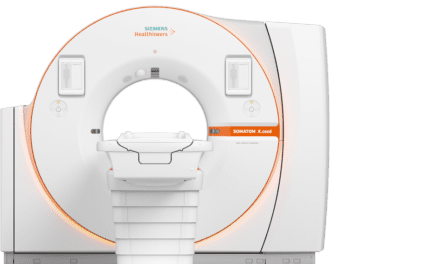As health care consumers become more informed about imaging, providers need to be prepared to woo women and pamper patients.
As I was watching the Olympics, I wasn’t surprised to see a riveting commercial by GE. It featured high-impact footage of runners and then cut to a close-up of a runner’s leg with an x-ray image superimposed over it. A calm but authoritative voice-over delivers a simple message, “There is so much we know about the human body, but we’re still amazed by the human spirit.”
In the past, you might expect GE to be showcasing its appliances and consumer products during the Olympics. But for the 2012 Games, the company is subtly branding its diagnostic imaging business. And my guess is, it’s starting to stick.
Today’s patients not only are interested in diagnostic imaging, but they also are becoming more and more well informed about the subject. Vendors are reaching them through advertising as well as other media exposure. For example, Toshiba’s Aplio 500 ultrasound system recently made a guest appearance on an episode of the nationally syndicated The Doctors. The television show’s hosts, Lisa Masterson, MD, and Travis Stork, MD, discussed the Aplio 500’s Fly Thru feature and how it can benefit patients.
Patients are reading about imaging on a regular basis, too. Countless news articles cover everything from when to get a mammogram to the perils of CT radiation exposure. As John Pellerito, MD, North Shore-LIJ’s chief of CT imaging and associate chairman of radiology, puts it, “We have a lot of wise consumers, and they ask the appropriate questions about when a CT scan is necessary” (see “The Height of Low” in this issue).
It’s no wonder I’m hearing a great deal these days about “patient satisfaction” and “improving the patient experience.” The fact is the imaging community is acutely aware that today’s patients are more sophisticated than ever before. What’s more, today’s patients know they have options when it comes to medical imaging.
In fact, the word patient is becoming something of a misnomer. What we’re really dealing with here are health care consumers. Some marketing experts even go so far as to suggest that physicians refer to their patients as “guests.” (More about that in our October issue.)
For radiology providers, all of this adds up to new ways of doing business. Simply put, it is no longer enough to count on referring physicians to build your practice. The patient is paramount. You need to be communicating directly with your patients to keep them in the fold and reaching out to potential new ones, too. One way to do so is with a carefully planned social media campaign (see “Social Media Mania” in this issue). Today’s patients are using social media to help inform their decisions. According to one study, “Over 41% of the population uses social media to specifically choose a hospital/medical facility.”
My prediction is that health care consumers are going to become more and more selective. Parents want safer imaging and less radiation exposure for their kids. Women want their mammograms to be less anxiety producing—whether that means a soothing setting, a more comfortable exam, or faster results. Everyone wants shorter wait times. Someday they may even request a GE scanner. Whatever they want—they’re going to demand it, so be prepared to deliver it. Otherwise, your guests may go elsewhere.

Marianne Matthews
Editor





